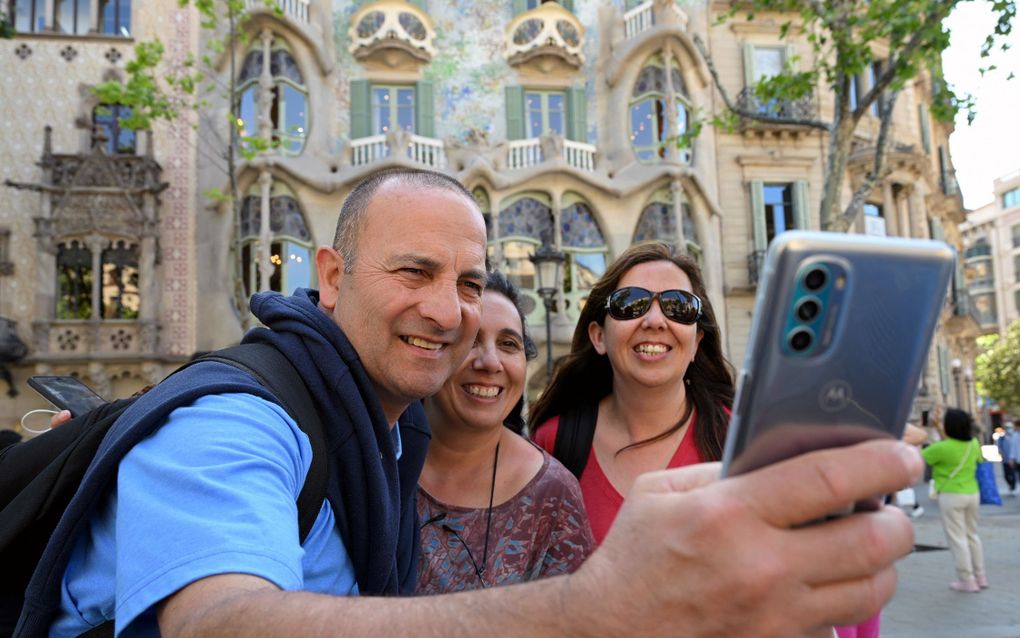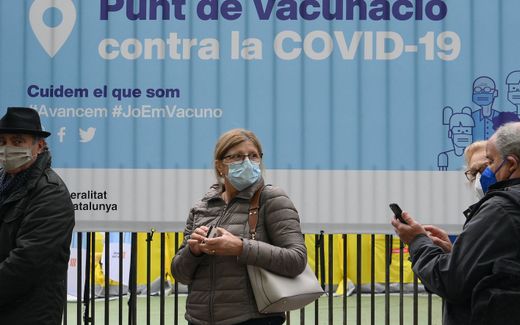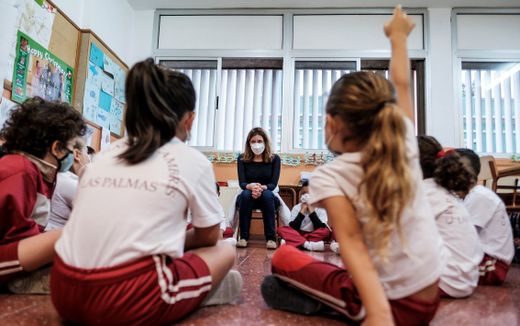Weekly column from Spain: Tourism as a national headache
05-08-2022
Christian Life
Jorge Ruiz, CNE.news

Tourists in Barcelona. Photo AFP, Lluis Gene
Christian Life
Spain is hot. Yes, it is warm. But it attracts many tourists as well. That brings money and a lively economy along the coast. But is it good for our country? I doubt it.
In the last few weeks, temperatures in Spain have exceeded 40 degrees and the media are constantly talking about global warming. But, for as long as I can remember, summers in Spain have always been extremely hot: between 35 and 45 degrees, except in the Atlantic and Cantabrian coastal strip, where it is normally below 30 degrees. The heat, together with the country's more than 5,500 kilometres of coastline (not counting the northern coast of the peninsula), has resulted in Spain becoming one of the countries that receives the most tourists in the world since the middle of the 20th century.
Jorge Ruiz (1969) was born in Barcelona, Spain. At the age of 19, he was converted to the Christian faith.

He graduated in Journalism at the University of Barcelona and received a PhD in Theology at the Faculté Libre de Théologie Réformée in Aix-en-Provence, France. He serves as a Protestant pastor in the Iglesia Reformada Continuada, in Rubí (Barcelona, Spain). He is assessor for the Trinitarian Bible Society for the Spanish and French projects. He is married and father of four.
In fact, in 2019, Spain became the second nation in the world that received the most tourists, with 84 million people travelling to the country for leisure reasons. In the year 2021, the tourism sector began to recover from the setback caused in 2020 by the worldwide confinements and restrictions due to Covid 19. It then welcomed 31 million tourists. So far this year, in 2022, tourism in Spain has reached 85 per cent of pre-2020 levels and is expected to reach 71 million tourists.
That is to say, under normal conditions, the number of tourists that Spain receives per year almost doubles its native population. Thus, the country, between its own population and tourists, annually hosts more than 130 million people.
Transformation at all fronts
In Spain, tourism is considered the country's main industry, allowing it to counterbalance its trade deficit (the imbalance of income from exports and imports). However, on the other hand, tourism is the event that has transformed the country at all levels, not only economically, but culturally and even spiritually.
Starting with the urban planning on the Mediterranean coast. If you want to see how was, for example, in Peñíscola in 1956, you can trace online the movie "Calabuch": a charming small fishing village of white houses. The plot of the film could be considered proto-touristic: an American scientist close to retirement discovers the idyllic tranquillity of this fishing village where time does not pass. Today, Peñíscola still has few inhabitants (8,000 people throughout the year), but its population increases to 100,000 during the summer months. Next to it is another important tourist town, Benicarló: between the two towns, there is no longer any undeveloped space.
But, above all, it can be said that tourism was one of the main reasons for the transformation of its creator, i.e. the Franco regime. Before the Civil War, there was hardly any tourism in Spain, at least as it is known today. Apart from the spa towns, only the coast north of Barcelona was the summer resort of the Catalan bourgeoisie, while the Cantabrian coast was rather reserved for the small group of royalty and aristocracy. Common people did not go on vacation.
Tourism of poverty
After the victory in the Civil War, Franco's regime initially approached tourism in the same way as the totalitarian regimes of Germany or Italy had done before: as a monopoly of the State. The State also exercised strict control over tourists, controlling all their movements and the money they could spend per day. Tourism in the 1940s consisted of guided itineraries, mainly through the cities of the interior of Spain. Tourists were attracted by the taste of adventure in a country that was absolutely Roman Catholic and backward at all levels. It was the tourism of poverty.
The 1940s was the time of the so-called autarchy in Spain. In reality, the country had been "cancelled" from the world that came out of World War II, just as Russia is today. France kept its borders closed until 1948, the UN also issued sanctions against Spain, which was also left out of the Marshall Plan. But, unlike Russia, Spain did not have enough raw materials, and the industrial machinery all came from abroad. In the long run, autarchy was a highway to complete ruin.
How could the country get rid of this international cancellation? By projecting a decidedly pro-Western image: signing the 1953 agreements with the USA (whereby it ceded the Rota and Torrejón de Ardoz military bases) and, finally, by exploiting tourism in the Mediterranean Levant and Andalusia to the full, being promoted in the Western countries under the slogan “Spain is different!”
It was in this way that, from the end of the 50s, the coast of Levante and Andalusia underwent a colossal, unimaginable transformation. It can be said that already at the beginning of the 70s, the Spanish coast was mostly in the same state as it is today. This, of course, led to an unprecedented economic boom.
But, at the same time, as we said before, tourism would also become one of the factors that undermined the foundations of the Franco regime. An important part of the population came to be, in one way or another, in contact with masses of people from other European countries. In this way, the population in Spain became aware of its backwardness, economically and in customs. As a result, the people of the country, in general, wanted to become definitively "European" – the great national objective until the Olympic Games in Barcelona and the Universal Exposition in Seville, both in 1992, the year that marked the full integration of Spain as a Western country in every sense of the word.
Tourism leads to sexual promiscuity
In recent years, people have begun to talk about the disadvantages that tourism has brought to Spain. It may seem strange, but it is not so strange for a country that wants to get rid of any visible legacy of Francoism. Tourism is thus pointed out as one of the causes that condemned inland Spain to backwardness and the emptying of its population, since all the economic and labour resources went to the coast. In a country with scarce water resources, allocating water mainly for tourism means not granting it for agriculture or eventual industry in the interior, and even limits the industrial use of water in the Mediterranean Levant, where a shortage already exists. Tourism also generates basically seasonal employment, which is ultimately responsible for the very high unemployment rates in the country.
All this is what is normally said today against tourism, usually from sectors of the left. It should be added that the tourism of sun and beach by day, and pubs and discos at night can only generate sexual promiscuity and the perversion of the country's customs. Which, in fact, is what has been happening in Spain since the mid-1960s.
Not to mention the open immorality in swimsuit fashion, especially for women, which means that today the once revolutionary bikinis can be seen as a relic full of pudor and modesty.
Therefore, it is certainly a complicated matter for a Christian to go to the beach in summer. But is also difficult to spend the summer roasting in more than 40 degrees in the shade in the interior, when one has more than 5,500 km of beaches. Therefore, waiting for morally and spiritually better days in society, the Christian, if he goes to the beach with his family, should choose carefully the place and the hour that is more appropriate and convenient. Because not all towns and all beaches are the same.
Related Articles





